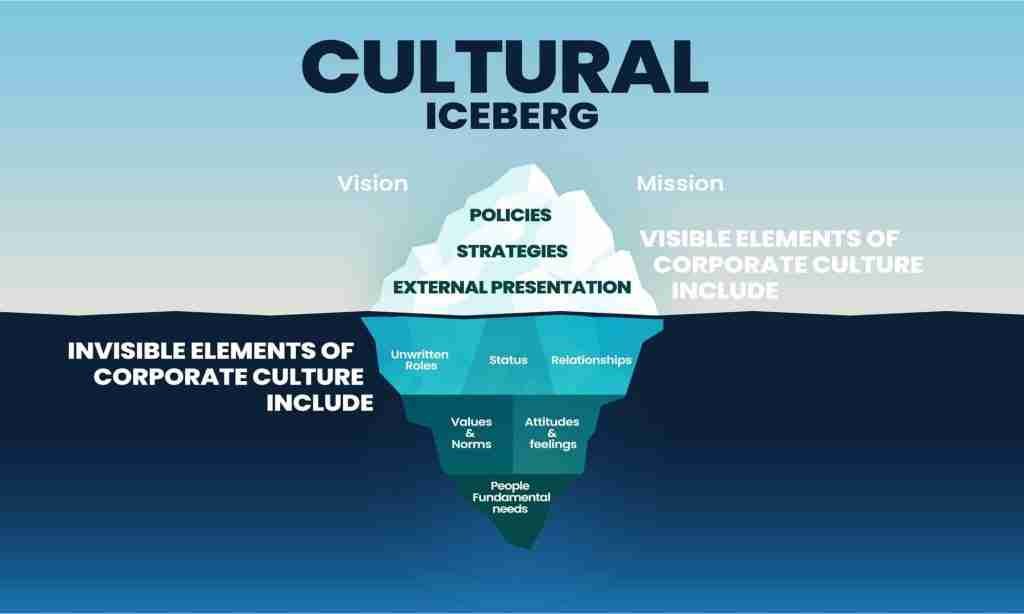About Corporate Culture
The Essence of Corporate Culture
In the dynamic world of business, corporate culture stands as the backbone of a company’s identity and values. It is the invisible yet palpable force that shapes the behaviors, ethics, and performance of both management and employees. Corporate culture is not a static entity; it evolves with the organization, influenced by internal and external factors alike.
Understanding Corporate Culture
Corporate culture is a complex tapestry woven from a company’s mission, values, ethics, expectations, and goals. It shows in how employees interact, make decisions, and shape the overall work environment. A strong culture aligns with strategic objectives and is widely seen as a key factor in attracting, motivating, and retaining top talent.
Types of Corporate Culture
There are generally four recognized types of corporate culture: Clan, adhocracy, market, and hierarchy. Each type has its own set of characteristics and values:
- For instance, a clan culture emphasizes internal focus on employee involvement, resembling a family environment
- Adhocracy culture (more or less the opposite of a bureaucracy culture) values creativity and innovation, encouraging a dynamic approach to business operations
- Market culture is results-oriented, with a focus on competition and achieving tangible outcomes
- Lastly, hierarchy culture is structured and controlled, with clear procedures and protocols
Transitioning from a Hierarchical to a hybrid Adhocracy and Market culture
Organizational culture is the backbone of any company, influencing every aspect of how business is conducted. For organizations entrenched in a hierarchical culture, making the shift towards a more dynamic mix of adhocracy and market culture can be a transformative move that drives innovation and competitiveness.
Understanding the Current Culture -> Before initiating change, it’s crucial to understand the existing hierarchical culture, which is characterized by its structured and controlled approach to management. This culture often results in well-defined processes and a clear chain of command but can also lead to resistance to change and slow decision-making.
Embracing Adhocracy and Market Cultures -> Adhocracy culture values creativity, innovation, and adaptability, encouraging a more flexible approach to management and decision-making. Market culture, on the other hand, is results-oriented, with a focus on competition and achieving tangible outcomes. Combining these cultures can create a dynamic environment where innovation thrives alongside a strong drive for results.
Steps to Cultivate Change
- Assess the Current Culture: Utilize tools like the Organizational Culture Assessment Instrument (OCAI) to gauge the prevailing cultural attributes within your organization.
- Define the Desired Culture: Clearly articulate the aspects of adhocracy and market cultures you wish to integrate, aligning them with your strategic objectives.
- Engage Leadership: Change must be championed by leaders at all levels, who will set the tone and model the desired cultural attributes.
- Communicate the Vision: Ensure that every employee understands the reasons for the change and how it will benefit the organization and their individual roles.
- Foster an Environment of Innovation: Encourage risk-taking and reward innovative ideas that align with the new cultural direction.
- Align Systems and Processes: Review and adjust policies, procedures, and reward systems to support the desired cultural attributes.
- Monitor Progress and Adapt: Regularly review the impact of changes and be prepared to adapt strategies to ensure alignment with the desired culture.
Conclusion -> Transitioning to a hybrid of adhocracy and market culture is not a one-size-fits-all process. It requires a tailored approach that considers the unique aspects of your organization. By following a structured plan and maintaining a clear vision, companies can successfully navigate this cultural shift, leading to a more agile and competitive organization in today’s fast-paced business landscape.
“A strong corporate culture is most likely a hybrid model of adhocracy and market type. It fosters innovation, integrity and a sense of belonging turning a company into a community.”
– Eric Roth
The Impact of Corporate Culture
The significance of corporate culture cannot be overstated. It affects every aspect of a business, from employee engagement and satisfaction to customer relations and financial performance. A positive corporate culture fosters a sense of belonging and loyalty among employees, which translates into higher productivity and better customer service. Conversely, a negative corporate culture can lead to a toxic work environment, high turnover rates, and a tarnished brand reputation.
Shaping Corporate Culture
Creating and maintaining a positive corporate culture requires deliberate effort and strategy. It involves clear communication of the company’s values and expectations, as well as the implementation of practices that reinforce those values. Leadership plays a crucial role in setting the tone and exemplifying the behaviors that reflect the desired culture. Moreover, recognizing and addressing the diverse cultural backgrounds of employees is essential in today’s globalized business environment.
The Cultural Iceberg

Exploring the Depths of Culture: The Iceberg Model
Culture is a complex and multifaceted concept that extends far beyond what is immediately visible to the eye. To truly understand the intricacies of different cultures, one must look beneath the surface. This is where the Iceberg Model of culture comes into play, a metaphor introduced by anthropologist Edward T. Hall in 1976, which remains a relevant tool for understanding cultural dynamics today.
The visible 10% of culture – language, food, music, fashion – is just the tip of the iceberg, representing a small part of the whole. Beneath the surface lie deeper elements like norms, values, ethics, and beliefs that shape behavior and perception. The Iceberg Model encourages exploring these unseen layers to gain a more empathetic, nuanced understanding. In a globalized world, such exploration is vital for effective communication, collaboration, and coexistence across societies.
Leader’s Secret Asset
Corporate culture significantly impacts business results, yet it often remains a low priority for leaders. Harald Port, a founding partner of Zurich-based consulting firm PvL Partners, has been advising on culture enhancement for over 15 years.
Passionate about building high-performing cultures to create business value, he considers culture the greatest asset for his firm and prioritizes its development daily. Raised in an international environment, he completed his studies in Zurich in 2000.
Improving Corporate Culture
Creating a positive and productive company culture is essential for any business striving to excel in today’s competitive environment, as it drives employee satisfaction, engagement, and performance. By implementing the following strategies, you can foster a culture that not only attracts top talent but also retains it, becoming one of your organization’s greatest assets through consistent effort and commitment.
Implement These Strategies
- Establish a Clear Purpose -> Your company’s purpose is the foundation of its culture. Clearly articulate your mission, vision, and values, and ensure they are communicated effectively to all employees. This gives your team a sense of direction and helps them understand how their work contributes to the company’s goals.
- Foster Open Communication -> Encourage a culture of transparency and open communication. Provide platforms for employees to share their ideas and feedback, and make sure management is approachable and responsive. Regular check-ins and team meetings can help maintain a dialogue and build trust within the team.
- Invest in Professional Development -> Employees want to feel that they are growing and advancing in their careers. Offer training and development opportunities that allow them to acquire new skills and take on new challenges. This not only benefits the individual but also brings new ideas and energy into the company.
- Promote Work-Life Balance -> Recognize the importance of work-life balance and support your employees in achieving it. Flexible working hours, remote work options, and ensuring that overtime is the exception rather than the rule can all contribute to a healthier, more balanced work environment.
- Recognize and Reward Contributions -> Make sure to acknowledge and reward the hard work and achievements of your employees. Recognition programs, performance bonuses, and even simple gestures of appreciation can boost morale and motivate your team to maintain high performance.
- Build a Culture Committee -> Consider establishing a committee dedicated to culture initiatives. This group can organize events, gather employee feedback, and implement programs that reinforce the company’s values and enhance the overall work experience.
- Lead by Example -> Leadership sets the tone for company culture. Leaders should embody the company’s values and demonstrate the behaviors they expect from their team. Authentic leadership can inspire employees and foster a culture of respect and integrity.
- Embrace Diversity -> A diverse workforce brings a wealth of perspectives and ideas. Create an inclusive environment where all employees feel valued and respected, regardless of their background. Diversity initiatives and training can help build a more dynamic and innovative company culture.
Onboarding
As an employer, be prepared for job interviews! Top potentials who prepare themselves well, will face you with the following questions. Take this opportunity to shine as a future employer!
Cheat Sheet – Questions

- What does a typical day look like?
- How is performance measured?
- What challenges is the team facing?
- Why is this position open?
- How would you describe the company culture?
- What growth opportunities exist?
- What do successful people here have in common?
- How do teams collaborate across departments?
- What’s most important to accomplish in the first 90 days?
- How has the company changed since its founding?
- What resources will be available for success?
- What are the next steps?
The Peter Principle
When promotion becomes a trap: In the bustling corridors of corporate life, success often wears the badge of promotion. One excels at jobs, impresses superiors and climbs the ladder. But what if that very ascent leads to a role where one’s no longer effective? This is the paradox at the heart of the Peter Principle coined by Dr. Laurence J. Peter in 1969.
- Promotions reward past performance, not future potential.
- Skills don’t always transfer between roles.
- Organizations rarely demote employees once they’ve reached their limit.
Over time, this leads to a hierarchy filled with people who are no longer competent in their roles – creating inefficiency, frustration and stagnation.
“In a hierarchy, every employee tends to rise to their level of incompetence.”
– Dr. Laurence J. Peter
The Peter Principle isn’t a death sentence – it’s a warning. Success isn’t just about climbing higher; it’s about finding the role where one thrives. The Peter Principle can be avoided but it requires a shift in mindset:
- Evaluate potential, not just performance.
- Offer dual career tracks (e.g., technical vs. managerial).
- Encourage lateral moves and skill development.
- Normalize stepping back from roles that don’t fit.
Ninja Services
Pragmatic, professional engagement rooted in global experience – Ninja Services to navigate complexity, optimize operations and drive results through Value Creation.
My Background includes well-developed, solid Core Competencies and is available to address diverse business needs, ensuring exceptional outcomes. I offer tailor-made solutions for both temporary assignments and permanent roles and am available for global travel on a flexible basis.
Contact for effective support in navigating challenges and driving success.
What’s More
The posts in My Blog feature reflective, story-driven pieces rooted in personal and societal insights.
The topics in My Interests explore abstract, philosophical ideas and their cultural and societal impact.
👁️ 7,213 Views

















